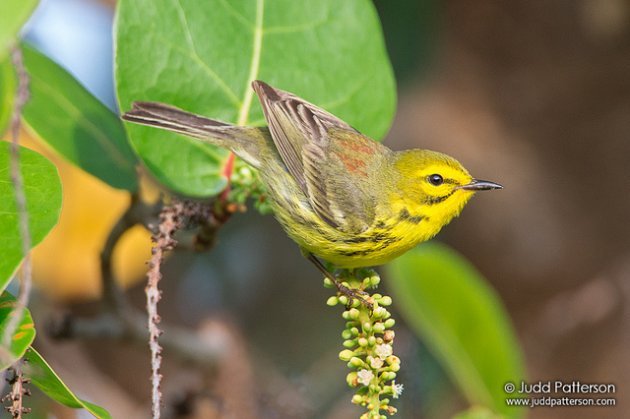
I always like to see the look of surprise on a visiting birder’s face when I tell them that the Prairie Warblers and Yellow Warblers in southern Florida are restricted to mangrove habitats. Although both species are widespread in North America as breeders in shrubby edge habitats, that is not the case in the southern half of the sunshine state (the more northerly race of Prairie Warbler is an uncommon breeder in the panhandle). Everyone, I would like you to meet the ‘Florida’ Prairie Warbler (S. discolor paludicola) and ‘Golden’ Yellow Warbler (S. petechia gundlachii) — the mangrove-loving versions of these two respective warbler species that I first became familiar with before encountering their more northerly kin.
A decidedly orange faced Prairie Warbler at Bill Baggs State Park, by Trey Mitchell
The ‘Florida’ Prairie Warbler is, as its namesake suggests, is at least endemic to the sunshine state as a breeder (the wintering range is not entirely known due to similarity in appearance with the northern race, although Florida birds are suspected to be resident with local movements), ranging north to about Brevard on the east coast and Tampa-St. Petersburg area on the west coast. However, the bulk of the population breeds in Miami-Dade and Monroe counties at the southern tip of the state, particularly around the mangrove fringed coasts and islets of Florida and Biscayne Bay. As a species, it is most closely related to the Vitelline Warbler, an endemic of the Cayman Islands, as well as having a passing resemblance to various other lowland Caribbean endemics such as Adelaide’s and St Lucia Warbler — no doubt pointing towards peninsular Florida’s Caribbean affinities. Interestingly, some populations in Florida Bay have a tendency to show strong orange coloration around the face as in the image taken by Trey Mitchell above.
The species is numerous and easily seen in the mangroves of Matheson Hammock County Park, Black Point Marina, and Flamingo area of Everglades National Park, where they are easily detected in January through April with their rising, buzzing song. Afterwards, however, they become much less vocal and seem to mostly disappear temporarily from May through July (no doubt nesting) before being joined by a flood of northern migrants. Listed as a species of Special Concern by the state due to destruction of mangrove habitats in the past, Florida’s Prairie Warblers do seem capable of quickly coming back as shown by the recent colonization of restored mangrove habitat at Bill Baggs State Park.
‘Golden’ Yellow Warbler, a complex of subspecies with a very different song and habitat preference to the more familiar northern races, by Dave McMullen
The second mangrove specialist warbler species found in Florida is the sedentary ‘Cuban’ Yellow Warbler, part of the ‘Golden Warbler’ complex of subspecies found throughout the Caribbean. Unlike the more northerly races, Florida’s Yellow Warblers are completely restricted to red mangrove habitats, ranging only as far north as Matheson Hammock County Park in Miami-Dade (but with a recent record in Coconut Grove a few miles to the north — range expansion?) with the bulk of the population in the Upper Keys and Florida Bay. It might be a recent colonist from the Caribbean, as it was only first found breeding in Florida in 1942.
Not only is this subspecies different from the northerly races by its non-migratory nature and habitat preference, but it also has an entirely different song. Attempts to call in a ‘Cuban’ Yellow Warbler with tape playback using a northern race’s song are completely ignored. Interestingly, ‘Cuban’ Yellow Warblers start singing at least a month after the resident Prairie Warblers, perhaps pointing towards a breeding cycle that is slightly staggered a bit later by a month or so.
Along with the ‘Mangrove’ Warbler of Central and northern South America, the ‘Golden’ Yellow Warbler might eventually be split from the northern races at some point in the future. For those wishing to see this interesting subspecies in Florida, it is tolerably common within its small range in the state, with reliable sites including Alabama Jacks on Card Sound Road and the Guy Bradley Trail at Flamingo, Everglades National Park.
And so concludes this brief introduction to Florida’s breeding warbler duo of the mangroves.


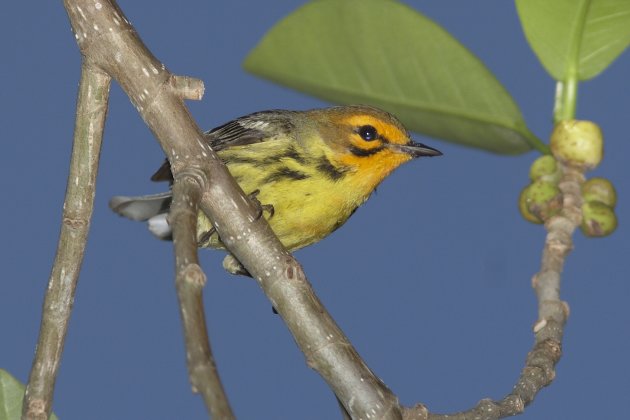
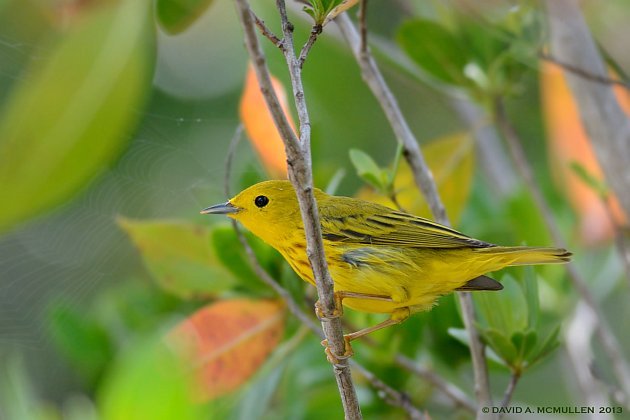
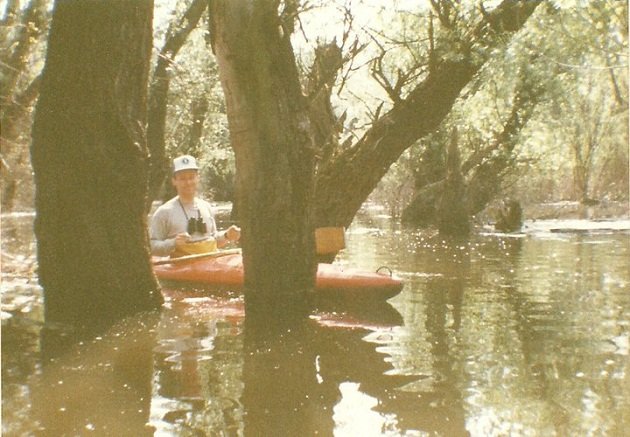
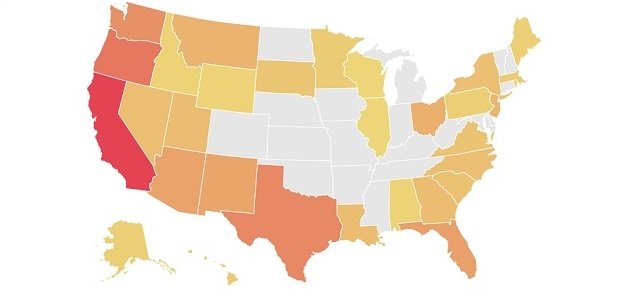

 New writers welcome – please contact us for details.
New writers welcome – please contact us for details.

















Enjoyed encounters with both of these great birds two weeks ago. I didn’t notice an orange face on the prairie warbler, so I’ll have to take a closer look next time.